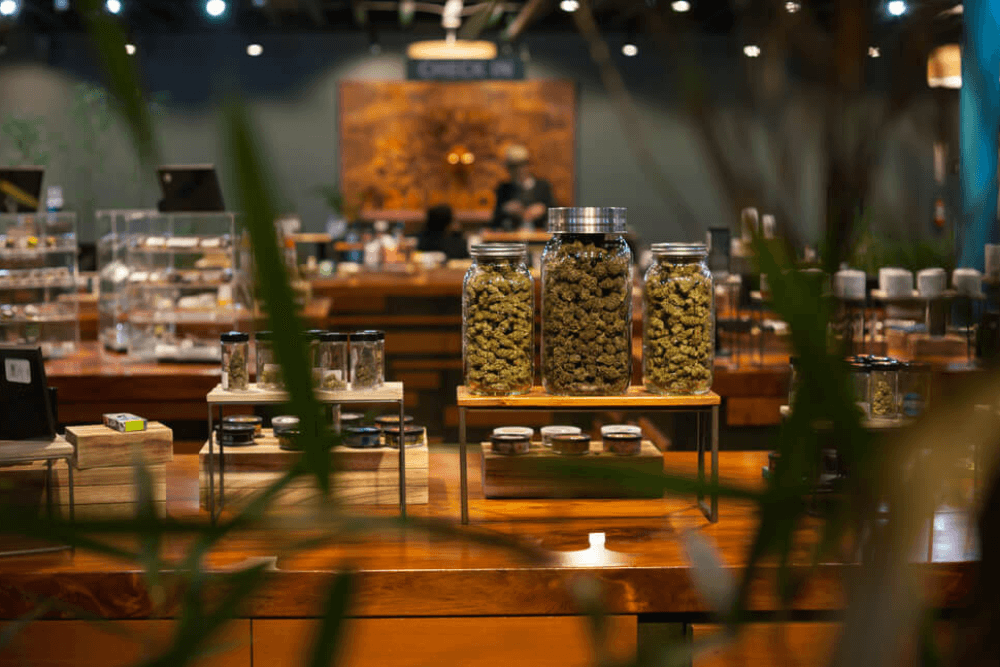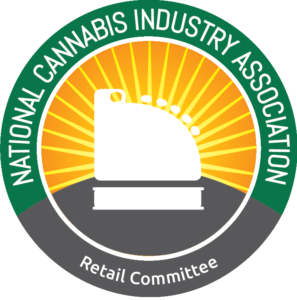Committee Blog: Optimizing the Cannabis Dispensary Experience – An In-depth Look at Terpenes, Cannabinoids, and THC for Superior Customer Service

By: Pete Longo, Founder & CEO, The Phinest Kind
Contributing Authors: Larina Scofield, Sweed POS | Nicole Rivers, Northern Light Cannabis Co. | Richard Fleming, Altered State Cannabis Company
Produced by: NCIA’s Retail Committee
The cannabis industry has experienced rapid growth in recent years, with more and more states legalizing its use for medical and recreational purposes. As a result, cannabis dispensaries are becoming increasingly popular, with many people visiting them for the first time. For dispensary owners, managers, and budtenders, it’s essential to provide a positive customer experience to build brand loyalty and attract repeat business. This blog will discuss the importance of focusing on the customer experience at cannabis dispensaries and how understanding terpenes, cannabinoids, and THC percentages can improve the overall experience for both new and experienced users.
Understanding the Customer Experience
What makes a great customer experience at a cannabis dispensary? A positive experience can be characterized by:
-
Knowledgeable Staff:
Budtenders and other staff members should be well-trained and able to provide accurate and easily digestible information on various cannabis products, including their effects and appropriate dosages.
-
Welcoming Atmosphere:
Dispensaries should be clean, well-organized, and aesthetically pleasing, making customers feel comfortable and at ease during their visit.
-
Product Selection:
A wide variety of high-quality cannabis products should be available to cater to the diverse preferences and needs of customers.
-
Personalized Recommendations:
Budtenders should be able to make personalized recommendations based on the customer’s preferences, desired effects, and level of experience with cannabis.
Terpenes, Cannabinoids, and THC: Key Components of Cannabis
To provide an exceptional customer experience, it’s essential for dispensary staff to understand the key components of cannabis, including terpenes, cannabinoids, and THC percentages. These components play a significant role in the overall effects of cannabis and can help staff make tailored recommendations for customers.
-
Terpenes:
Terpenes are aromatic compounds found in many plants, including cannabis. They give each strain its unique aroma and taste, and they can also have therapeutic effects. There are over 100 different terpenes in cannabis, with some of the most common ones being myrcene, limonene, and pinene. Understanding the terpene profile of a specific strain can help staff recommend products based on the desired flavor and aroma, as well as the potential therapeutic benefits.
-
Cannabinoids:
Cannabinoids are the chemical compounds found in cannabis that interact with the body’s endocannabinoid system, producing various effects. Many Cannabis products advertise “full-spectrum” CBD, meaning that the product not only contains CBD, but can also contain the other cannabinoids as well as terpenes, essential oils, and up to 0.3% THC. There are over 100 different cannabinoids in cannabis, with THC (tetrahydrocannabinol) and CBD (cannabidiol) being the most well-known. THC is responsible for the psychoactive effects of cannabis, while CBD has various therapeutic effects without causing a “high.” Dispensary staff should be familiar with the different cannabinoids and their effects to help customers choose products based on their desired experience.
-
THC Percentages:
The THC percentage of a cannabis product indicates the concentration of THC, which largely determines the psychoactive effects of the product. Generally, higher THC percentages lead to more potent effects. However, it’s important to note that the overall effects of a cannabis product are influenced by other factors, such as the terpene profile and the presence of other cannabinoids. Dispensary staff should be able to explain the significance of THC percentages and guide customers in selecting products with appropriate potency levels.
Educating Customers and Tailoring Recommendations
Dispensary staff should prioritize educating customers about terpenes, cannabinoids, and THC percentages to help them make informed decisions about their purchases. By understanding these components, customers can better tailor their cannabis experience to their preferences and needs.
For example, a customer looking for a relaxing experience may be interested in a strain high in myrcene, a terpene known for its sedative and relaxing effects. In contrast, someone seeking a more uplifting and energizing experience might prefer a strain with a higher concentration of limonene, which is associated with elevated mood and increased energy. Additionally, customers with little to no experience with cannabis may prefer strains with lower THC percentages to avoid overwhelming psychoactive effects.
When assisting customers, dispensary staff should ask about their preferences, desired effects, and experience level with cannabis. Based on this information, they can recommend strains and products that align with the customer’s goals while considering the terpene profile, cannabinoid content, and THC percentage. This personalized approach can help customers feel more confident in their purchases and lead to a more satisfying experience.
For HR Professionals: Training and Development
To ensure that dispensary staff can effectively educate customers and provide tailored recommendations, it’s crucial for HR professionals to invest in comprehensive training and development programs. Training should cover a wide range of topics, including:
-
Cannabis Fundamentals:
Staff should have a solid understanding of cannabis basics, such as the differences between indica, sativa, and hybrid strains, and the various forms of cannabis product, methods of ingestion and their varying timing of effects (e.g., flower, edibles, concentrates, tinctures, and topicals, vaping, eating, and drinking).
-
Terpenes, Cannabinoids, and THC:
As discussed earlier, staff should be well-versed in the role of terpenes, cannabinoids, and THC percentages in determining the effects of cannabis products.
-
Customer Service Skills:
Staff should be trained in effective communication, active listening, and empathy to better understand and serve their customers.
-
Compliance and Regulations:
Dispensary staff should be knowledgeable about state and local regulations regarding cannabis sales, as well as safety protocols and best practices for handling cannabis products.
By providing thorough training and development opportunities, HR professionals can ensure that dispensary staff are equipped to deliver an exceptional customer experience.
The Role of Technology in Enhancing the Customer Experience
As the cannabis industry continues to grow and evolve, technology is playing an increasingly important role in enhancing the customer experience at dispensaries. In this section, we’ll explore several innovative technologies and tools that can help dispensary owners, managers, and staff provide an even better experience for their customers.
-
Point-of-Sale (POS) Systems:
Modern POS systems designed specifically for cannabis dispensaries can streamline the sales process and improve the customer experience. These systems can track customer preferences, manage inventory, calculate taxes, and ensure compliance with state and local regulations. By investing in a robust POS system, dispensaries can provide a more efficient and personalized service for their customers.
-
Digital Menus:
Instead of relying on printed menus that can quickly become outdated, dispensaries can use digital menus to display their product offerings. These menus can be easily updated to reflect current inventory, and they can also include detailed information about each product, such as terpene profiles, cannabinoid content, and THC percentages. By providing customers with easy access to this information, digital menus can help them make more informed decisions about their purchases.
-
Online Resources and Mobile Apps:
Dispensaries can enhance the customer experience by offering online resources and mobile apps that provide valuable information and tools related to cannabis consumption. For example, they can develop educational content about terpenes, cannabinoids, and THC percentages or create interactive tools that help customers determine their ideal dosage based on their preferences and experience level. By providing customers with access to these resources, dispensaries can support them in their cannabis journey and help them make more informed decisions.
Customer Engagement and Community Building
Another crucial aspect of providing an exceptional customer experience at cannabis dispensaries is fostering a sense of community and engagement among customers.
-
Events:
Hosting events such as product launches, tastings, and guest speaker sessions can provide customers with an opportunity to learn more about cannabis, sample new products, and connect with other like-minded individuals. These events can also help establish a dispensary as a trusted source of information and a hub for the local cannabis community.
-
Educational Workshops:
Dispensaries can offer workshops that focus on various aspects of cannabis, such as understanding terpenes, cannabinoids, and THC percentages, cooking with cannabis, or cultivating cannabis at home. These workshops can help customers gain a deeper understanding of cannabis and its various uses, ultimately improving their overall experience.
-
Social Media:
Actively engaging with customers on social media platforms can help dispensaries stay connected with their audience, provide real-time updates on products and promotions, and gather valuable feedback. Dispensaries can also use social media to share educational content, answer customer questions, and participate in industry-related conversations.
-
Loyalty Programs:
Dispensaries can implement loyalty programs that reward customers for their repeat business, encouraging them to return and further engage with the dispensary. Loyalty programs can include discounts, exclusive promotions, or early access to new products, and can be an effective way to strengthen the customer-dispensary relationship.
Focusing on the customer experience at cannabis dispensaries is crucial for building brand loyalty, attracting repeat business, and maintaining a competitive edge in the growing cannabis industry. Dispensary owners, managers, and budtenders must prioritize educating customers about terpenes, cannabinoids, and THC percentages to help them make informed decisions and tailor their cannabis experience to their preferences and needs. HR professionals play a key role in ensuring that staff receive comprehensive training and development, enabling them to provide exceptional service and create a positive customer experience. By investing in the customer experience, dispensaries can set themselves apart and thrive in the competitive cannabis market.
Committee Blog: How Can Retailers Improve the Customer Experience?

 by NCIA’s Retail Committee
by NCIA’s Retail Committee
Contributing Authors – Ace Castillo, Brian Anderson, Tony Trinh, Pete Longo, Nicole Rivers, John Kent, Larina Scofield, and Brian Hart
In a competitive market the customer experience is one of the biggest factors in the success of a company. This begs the question as to how to improve the customer experience? In one simple word, service. But what can retailers do to provide service to the customers? After consulting several members within the NCIA retail committee, here are a few takeaways.
Education
This applies to both the customer and the employee. While there are certainly customer-facing employees who have strong knowledge and have made a great impression on customers, a common trend is there is a lack of consistency with employee knowledge and communicating information. One can go into a retail location and ask the same question to four budtenders and get five different opinions. This is often a reflection of the lack of standardized and consistent training provided by management. There are certainly challenges regarding the high turnover of employees in the cannabis industry however management needs to find solutions to ensure every employee is trained in the same way so there is a standard of cannabis knowledge. Once that standard is in place, customer-facing employees can provide consistent and well-informed information to the customer. Examples include communicating the properties of the plant like that of the different cannabinoids and terpenes, their effects, and which cannabis products can maximize the desired effect of the customer.
Engagement
Engaging customers and the community improves the overall customer experience. Often when applying for a license a retail location has a community engagement plan that looks promising but doesn’t get executed. It is understandable there are a litany of tasks needed to be performed but if a retail location wants to improve the customer experience, engage the customer and community. Host events where a retail location can get to know the customer and community and provide value in these events through education. Engage community leaders and people who have concerns about a retail location in their area. This does not mean people will change their opinions however if they feel they are being listened to and have respectful communication then the overall reputation of a business will be improved upon. A good business reputation will improve interactions with customers. Also, have retail employees engage customers, this goes back to sharing information about the plants and products.
Process Development
Evaluate and improve the customer experience. If one trains employees and engages customers, leverage these experiences to improve the process. One conversation can provide valuable insight as to how to improve service. Another conversation may provide insight as to what products customers find value in or importantly detract value. It could be that too many customers find the explanations provided by trained retail staff are too detailed or too vague. If that is the case, make the appropriate changes to improve the process. Customers will notice when changes are made for their benefit and this strengthens their desire to return to the retail location.
Data Analytics
Observe quantifiable patterns and this doesn’t need to be over complicated. What are customer flow-through rates? Is there a time of day where there is an influx of customers and could there be a correlation as to what they are buying? Is there a time of day that many customers come in for a specific item and through this observation can changes be made to make the process easier and the overall experience better? It could be that customers at a specific location prefer a specific brand or type of product and by having the right levels of inventory a retail location won’t run out of products and disappoint the customer. Conversely if there are products that are not selling and could potentially serve as an unwanted distraction to customers, it could be possible the customer experience would be improved upon by removing the product. Reviewing data about customers does not need to be intrusive and can be viewed at a high level.
Company Values
Does a retailer have a list of values, are they authentic, and is it followed? Keeping to company values provides direction and commonality between the company and the customer. Is there a retailer that genuinely cares about kindness and is it practiced throughout the company? If the owner of the company treats a manager with kindness and the manager treats customer-facing employees with kindness, there is a greater likelihood the customer-facing employee will treat the customer with kindness. Whatever the values of the company are, they need to be announced and if practiced, customers will see it in everyday interactions and that can make the difference from good to great.
As one may notice, the aforementioned tips are not revolutionary or the first of their kind. Instead, these are ideas that can be practiced daily and make small but incremental improvements. We encourage you to try these tips out and through consistency over time, these incremental improvements will compound and improve the customer experience.
 Brian Hart is a consultant and entrepreneur in the cannabis industry and has both academic and practical experience within the cannabis industry. Having written his master thesis using a neoclassical economics model to conduct an industrial analysis of the Colorado Cannabis industry, Brian grew and sold cannabis and has consulted on the industry for several years nationally as well as internationally.
Brian Hart is a consultant and entrepreneur in the cannabis industry and has both academic and practical experience within the cannabis industry. Having written his master thesis using a neoclassical economics model to conduct an industrial analysis of the Colorado Cannabis industry, Brian grew and sold cannabis and has consulted on the industry for several years nationally as well as internationally.
Member Blog: 7 Practical Marketing Tips for Navigating Unchartered Waters

Now is the time to maximize brand value on things that don’t cost extra.
By Tara Coomans, CEO of Avaans Media
Member of NCIA’s Marketing and Advertising Committee
You may look at these 6 cannabis PR ideas and wonder what they have to do with PR, but your reputation is holistic and dynamic, and these PR tips add up to big value.
2022 has been a mixed bag for the cannabis industry. If you are feeling the pinch then you’re probably looking for ways to increase revenue without incurring considerable extra costs.
Corrections are quite literally a matter of time – it’s just part of capitalism. But with every correction comes a recovery and THAT’S what you should be planning for right now. It might seem difficult to plan for that day, but now is the time – especially since your competitors are probably cutting marketing budgets, if you maintain yours and mix in these ideas, you’ll be exceptionally well positioned for the happier days ahead.
Here’s some good news, see how the experts are bullish.
MJ Biz projects the cannabis industry’s impact will still be near $100 billion by 2022, and nearly $158 billion by 2026.
According to Viridian Capital Advisors, a financial and strategic advisory firm for the cannabis market, investors are encouraged to invest in cannabis stocks now, because they forecast a 2023 & 2024 with a 25% increase in revenues for the cannabis sector, with flat margins. More good news U.S. cannabis stocks with trade at EV/EBITDA multiples of 5.7x (a 60% increase over 2022) for 2023 and 4.6x (a 50% increase over 2022)for 2024.
If you’re a smaller brand, keep at it, Viridian says MSOs will continue to lose share to small operators in 2022.
According to Gallup, the percentage of U.S. adults who say they have tried marijuana is sitting at 49%, the highest measurement to date.
These projections show some pretty impressive growth – so don’t act too rashly yet. But, you should absolutely consider adding these tips to your planning so you can excel during this time and maximize brand value. Frankly, you should do these things in the best of times too, because they’re fruitful and evergreen ideas.
Double Down On Relationships
“People will forget what you said, people will forget what you did, but people will never forget how you made them feel.” -Maya Angelou
Join and Participate in Active Industry Associations
Right now, we need to commit to the industry associations that are actively working to improve and defend our industry on the local level and the national level. When you join, ask how you can more actively support the organization. By supporting the organization, you’ll not only strengthen its mission, but you’ll also be able to get to know the people better too. Double down with your time and you’ll find the returns are immeasurable. Take full advantage of the membership benefits, if there are ways to share your point of view, maximize those. As the industry consolidates, people are looking to do work with people they trust and the best way to encourage trust is to be present, take part, show your commitment to the organization, the mission, and the people who are contributing to the industry. At Avaans Media, we’re big fans of the way National Cannabis Industry Association (NCIA) treats its members.
Treat Your Clients & Vendors Like Gold
When was the last time your CEO attempted to make budtenders feel special? Now is a great time. Budtenders, like it or not, are the face of your brand to the consumer and trust me, they feel stressed about the cannabis industry’s challenges too. Why not do something no one else will do for the front line during when things get rough: treat them with respect. Small efforts can go a long, long way right now. I’m not talking about training, I’m talking about thinking of ways to thank budtenders right now, genuinely show your appreciation. It could be as simple as a surprise visit to every dispensary with gift cards. Sure you can go bold and that’s fantastic too, but if you can’t be bold, that’s not an excuse to do nothing. Everyone else will do nothing, do more and get more.
While we’re at it, let’s talk vendors. Sure, go ahead, negotiate good terms – AND uphold your end of the bargain. No one will forget that you drove a hard bargain, but that’s business. But go the extra mile and hold up your end of the deal as if your life was on the line because, from a brand perspective, it is. The last thing you want right now is lackluster partners or partners who don’t really love you, what you want right now is passion, the vendors who are going the extra mile for you-but to do that, you need to treat them well too. Any partner who will go through the craziness of a correction while looking out for you is worth their weight in gold, treat them that way. Pay on time, acknowledge their efforts, and the importance of the relationship. Put a little free-but-important muscle into it and watch how that pays dividends.
When It’s Time to Say Goodbye
If you have to separate from employees or partners, do it with class. Be communicative and as fair as you can possibly be. Anything you do when severing a relationship, especially when it’s abrupt, will be especially remembered. So take a hard look at what your brand is worth and treat goodbyes with respect and dignity. If you’re letting employees go, be sensitive to timing. If you’re canceling a contract, have a real discussion with your partner about how to do it fairly. It’s easy to feel shame about these conversations, but don’t hide from them. Yes, these conversations are the worst kind to have, but during the tough times, it’s what you do more than what you say that people will remember.
Celebrate Your Most Passionate Customers
Customers are the obvious driver of revenue. Now is a great time to make being your customers more fun. Think about what’s REALLY important to your customers. What drives their motivations? Reward cost-conscious customers with small incentives like purchase cards that can be turned in for promotional products. If your customers are creative, how can you encourage them to spend their creative energies on their brand commitment? It could be making the inside of your packaging a game, it could be encouraging them to share your brand through social media. And by the way, track your most passionate brand advocates on social media and never forget to celebrate them and acknowledge them. No cannabis brand is too big to thank its customers right now.
Don’t Stop, Won’t Stop
“When they go low, we go high,” -Michelle Obama
Emphasize Your Strengths – More
You might not have had the time last year to really see where your best success stories were, but now is the time to look – and celebrate – what worked by actually increasing the heat of what’s doing well. Invest in things that are working well. Increase ROI of the things that are already returning value by committing to them at a whole new level. If your brand is great at social media, keep at it and make it better. Issue a special version of your most popular product line. Really taking a stand and focus on something you do well will make you stand out from the pack and return more ROI as your competitors struggle to figure out how to manage the dynamics of this marketplace.
Maintain Quality
Consumers know, especially your most passionate consumers, they can tell when you’ve made substitutions and formulation changes. As tempting as it may be to cut corners on the product right now, don’t. Keep your customers happy by maintaining quality while your competitors decrease theirs. Keeping the quality up doesn’t cost extra, but decreasing quality will cost you in the short and long run.
Keep Your Chin Up and Your Numbers Up Too
Incentivize your sales, marketing and PR teams & vendors with trackable KPIs and hold them accountable. Self-serving as this sounds, if you devest cannabis PR, marketing and sales now, you’ll struggle to regain market share when the market starts its inevitable upward tick. Resist the urge to reduce these expenses because the hidden costs are ginormous and tend to extrapolate themselves in silent but deadly ways over years, not months. I’ve seen this happen over and over again, eliminating these roles, or worse, hiring someone for cheaper, costs companies more. Instead, attend sales, marketing, and PR meetings and show that you’re in touch with the marketplace and work collectively to address issues early. Make sure you’re keeping a close eye on benchmarks and competitors so you have a real idea of how you’re faring in comparison.
In Short
Kindness, professionalism, and time don’t cost extra, but they can be the difference-maker. Now is a great time to really make your brand stronger. Now is a good time to focus on the solutions that will bring you the most value and even increase trust so you can maximize your opportunities during a rebound.
 Tara Coomans, is CEO of Avaans Media, a digitally forward PR agency that specializes in emerging industries, from startup through IPO, including cannabis PR, since 2015. Services include bespoke PR for ambitious cannabis companies as well as PR Sprints exclusively for consumer brands and products. Avaans Media is based in Los Angeles, with distributed team members around the country including Washington D.C., New York, Oregon, Illinois, and Colorado. Coomans is on NCIA’s Marketing & Advertising (MAC) committee and leads the MAC Experts Directory subcommittee for 2021. Coomans is a frequent writer and speaker on public relations, marketing, and social media topics.
Tara Coomans, is CEO of Avaans Media, a digitally forward PR agency that specializes in emerging industries, from startup through IPO, including cannabis PR, since 2015. Services include bespoke PR for ambitious cannabis companies as well as PR Sprints exclusively for consumer brands and products. Avaans Media is based in Los Angeles, with distributed team members around the country including Washington D.C., New York, Oregon, Illinois, and Colorado. Coomans is on NCIA’s Marketing & Advertising (MAC) committee and leads the MAC Experts Directory subcommittee for 2021. Coomans is a frequent writer and speaker on public relations, marketing, and social media topics.
Member Blog: 4 Budtender Onboarding Tips To Help Keep You Compliant

by Tommy Truong, KayaPush
A recent survey by Headset.io found that 55% of budtenders leave their jobs within the first year of employment.* But why?
Some believe improper onboarding could be a culprit.
First impressions matter – and improper onboarding can leave budtenders feeling underprepared and unappreciated. Moreover, budtenders who don’t receive proper compliance training might be terminated due to compliance infractions and could even be at personal risk for their errors.
Luckily, by setting up solid budtender onboarding SOPs that put compliance first, you are more likely to keep great hires – and avoid compliance infractions.
The following information will help dispensary owners implement hiring and training strategies to increase retention, avoid compliance infractions, and simplify dispensary onboarding.
1 – Look into legal before you hire.
Compliant onboarding starts with understanding your budtenders’ requirements to work at your dispensary.
Every state has unique requirements regarding background checks, legal age, and budtender certifications – so it is essential to research each of these elements before you begin the hiring process.
Once you have established your hiring guidelines regarding legal requirements – you can take it one step further and set up an applicant tracking system that is customized to only reach out to applicants who qualify for your set terms.
Using tools that automate these processes will make compliant dispensary hiring easy.
Social equity hiring initiatives in cannabis
While we’re on the topic of hiring for your cannabis dispensary, we would be remiss if we didn’t mention the importance of researching potential social equity programs for dispensary hiring opportunities.
You can use these resources to find qualified social equity candidates for your dispensary based on the state in which you are located.
2 – Have an organized onboarding documentation process.
The next step to a smooth and compliant onboarding process is to know all the forms you need to provide and gather from your new hire.
If you are an American business owner, the forms you will need to collect from your employee include:
- W2
- Criminal record check verification
- 1-9
- State Tax Form
- ID or Passport
- Social security information
- A void check
- A signed employer agreement
- Any certifications you have requested they acquire
The forms you will need to share with your new hire include:
3 – Use self-serve onboarding software.
Business owners who don’t use employee onboarding software manage a lot of paperwork.
From chasing new hires around for signatures or documents – to figuring out the best way to store things – it’s a time-consuming headache, and it’s not ideal.
With dispensary self-serve onboarding software, dispensary owners can eliminate 100% of their paperwork – and increase their compliance in many ways.
Here’s how it works. When a new hire joins, a dispensary owner can share their onboarding link, where their new hire will upload digitized documents directly into the system for central storage.
If any documentation is missing, the system will send a reminder to ensure they provide all the information needed for dispensary owners to stay compliant.
4 – Provide compliance training for budtenders
Compliance training should be a critical part of the budtender onboarding process – but what does that mean?
For budtenders, there are four main areas of compliance to master: How to sell products to customers and with a POS system, how to handle products, and overall regulations comprehension.
Selling products to customers training might include:
- Learn how to greet guests in a compliant way
- How and when to properly ID guests
- Knowledge of strains, potency, and effects
- Understanding different types of products based on clients’ needs
POS training might include:
- Knowing how to input ID information
- Learning how to ring in products correctly
- Understanding product limits per customer guidelines
- Knowing how to use and report sold products with a compliant POS
- Understanding the compliance factors behind customer loyalty programs and incentives
Product handling training might include:
- How to properly package product
- How to showcase product
- How to inventory product
- How to handle products
Overall regulation comprehension might include:
- Current cannabis laws in the state or city
- Current compliant regulations
- Store opening and closing SOPs for compliance
- Security SOPs for compliance
- How to use cannabis software tools for clock in’s and schedules.
What are other tips to stay compliant?
Compliance is one of the most challenging aspects of running a cannabis dispensary – however, if you surround yourself with the right team, use cannabis software built for dispensaries in your state, and check in often on regulatory updates – you will be alright.
*(Headset.io, 2022 An analysis of employee turnover in cannabis retail)
 Author Tommy Truong is the CEO at KayaPush; the cannabis software helping dispensary owners manage their employee HR, scheduling, and payroll. KayaPush also integrates with leading dispensary POS systems. Tommy loves hot sauce, fried chicken, and running with his Boston terriers
Author Tommy Truong is the CEO at KayaPush; the cannabis software helping dispensary owners manage their employee HR, scheduling, and payroll. KayaPush also integrates with leading dispensary POS systems. Tommy loves hot sauce, fried chicken, and running with his Boston terriers
KayaPush delivers an innovative, unified compliance solution that meets payroll and HR needs without compromising speed and accuracy. Implementing KayaPush will save you time and money and help eliminate the financial risks associated with non-compliance.
Member Blog: Five Reasons to Use a High-Speed Smart Safe for Your Cannabis Business

by Bobby Combs, Kisan America Corporation
There are many challenges to running a successful cannabis business, including finding the correct product to sell, hiring and training qualified budtenders, dealing with state regulations, accepting cash payment, and depositing cash into the limited number of banks and credit unions that accept cannabis business. Although many economists and magazines believe cash is going away with the recent introduction of digital and app-style payment solutions, in the cannabis space, cash is king. Cash payment is really the only form of payment for many states except for the rare occasions an app can be used. The questions that have been asked for years are what does the cannabis industry do with the cash payments they receive, how is the cash counted and secured, and how can it be deposited into the business bank account?
Cannabis businesses are always looking for ways to effectively count cash and make deposits in their retail locations while simultaneously trying to lower labor cost, increase accountability and productivity, and reduce risk. Traditional deposit preparation methods have not drastically evolved in the last 50+ years. A budtender will pull their till from the drawer and count down to the starting till amount, leaving the remaining funds as the deposit. In addition, it is also common practice for businesses to incorporate dual authentication practices, essentially double counting, or counting in the presence of a witness to ensure the count is correct. While dual authentication can give the impression of good quality control and insurance, unfortunately, it raises the cost of counting the deposit inside the store by tying up at least two employees’ time and attention on trivial cash counting responsibilities. Granted the store manager is a salaried employee, but the downside is the store manager is managing for time to count cash instead of the daily sales, however, there is a much better, faster, and more accurate way to make deposits in the cannabis industry.
A high-speed smart safe is faster than counting by hand and a more secure way to deliver cash deposits to the select banks. The reason is, at the end of the night, the procedure of making a deposit at the bank location is a dangerous one and is why many organizations will have utilized the same type of dual authentication to drive to the bank to make the deposit in the night drop box. Again, there is an illusion of safety with having two people make a deposit in the night drop. Here are five of the many reasons to use a high-speed smart safe in a cannabis business:
Accountability:
The smart safe provides individual user accountability, by capturing critical transactional data: who is making a deposit, the date and time stamp of the transaction, and the total value of the deposit. Individual user accountability allows customers to abandon the need to deploy dual authentication practices, allowing managers to reallocate their time and attention towards revenue-building responsibilities: supervising employees, training employees, inventory, customer service, etc.
Remote Visibility:
An online dashboard provides detailed transaction statements, trend/behavior tracking potential, and simplified reconciliation reporting. Reports can be accessed online from any device, downloaded/exported, and shared across your network, which improves the efficiency of accounting and loss prevention departments. The online dashboard will have different reports ranging from daily deposit, transactional history for the day, and a monthly deposit report for easy reconciliation.
Deposit Accuracy:
Incorporated bill validators will count and authenticate each note before securing funds into their final depository, thus creating a closed-loop system-cash is deposited, not dispensed.
Security of Funds:
By incorporating drop policies that align with the placement of the cash management device, customers can achieve an efficient and secure deposit process, but also reduce unnecessary cash exposure that may accumulate within a till drawer or within the back office. Smart safes are designed to only allow the Cash In Transit Company to pick up all deposited cash thus reducing the risk of theft.
Provisional Credit:
Provisional Credit is an online credit to the business bank account prior to the removal and secondary validation of funds offsite. In conjunction with your banking relationship, a smart safe has the ability to transmit a daily electronic file to the bank where said bank will give credit on the day’s deposit.
With the proper smart safe in place, it will allow cannabis business owners to manage the cash deposits more efficiently and reduce risk inside the location, and to reduce lower/short deposits. The smart safe gives each owner the ability to log in to the online dashboard from any device connected to the internet and see all the transactions from all smart safes across all their cannabis locations. Just imagine having the ability to see all deposits and transaction history in one convenient place to allow for better transparency and reconciliation. With the CARES Act being introduced and voted on, if passed, it would afford for more banking partners and offer more options for the smart safe to send provisional credit to your bank.
 Bobby Combs is National Account Executive at Kisan America Corporation. He has over 6 years of experience in the cash automation industry and utilizing previous experience to formulate best practices and redesign cash handling procedures to maximize efficiency and reduce risk and labor. Kisan provides cash management solutions through smart banknote deposit and sorting systems.
Bobby Combs is National Account Executive at Kisan America Corporation. He has over 6 years of experience in the cash automation industry and utilizing previous experience to formulate best practices and redesign cash handling procedures to maximize efficiency and reduce risk and labor. Kisan provides cash management solutions through smart banknote deposit and sorting systems.
Member Blog: Increasing Employee Retention in the Cannabis Industry

by Matthew Hughes, Ximble
A recent report from Headset Cannabis Intelligence utilized Point of Sales systems to gather data from Washington and Colorado state cannabis dispensaries.
The general overview of dispensary budtenders is that they don’t tend to stay around long as the job role has a high turnover rate. In fact, nearly 60% of employees don’t last past two months – and only 40% make it past the first. To make new hires worth the time and cost retention is essential, otherwise any hiring dispensary will be hemorrhaging time and money that could otherwise be directed into the growth of the business.
With only 14% of employees lasting beyond three months, it’s obvious that the quality of onboarding and training is a crucial, determining factor of retention.
The type of welcoming into the workplace, type of training and management they receive in conjunction with the tools they receive for work all contribute to whether that stay past the two-month mark.
While the roles in cannabis dispensaries may come with their own challenges, there’s no clear reason why turnover is so high.
With the industry expected to grow from $9.2 billion to $47.3 billion over the next decade within the U.S alone, it could be that the growing opportunities available allow budtenders to choose and hop between employers within the industry, meaning that dispensaries need to compete against one another to retain employees. Alternatively, it could be the management, burnout, being overexerted or under challenged.
Either way, there are a number of employee management methods that help reduce the employee turnover rates by creating an engaging and hospitable working environment, which will in turn lead to the reduction of hiring and training costs, the boosting of team morale and consistency in the customer experience.
Promoting Workplace Harmony
 The running of a dispensary requires management to constantly assess staffing costs and needs for the changing demands of the business. However, too much attention to the needs of the business and too little on employees can lead to the overworking of staff, burnout and an unpleasant working environment.
The running of a dispensary requires management to constantly assess staffing costs and needs for the changing demands of the business. However, too much attention to the needs of the business and too little on employees can lead to the overworking of staff, burnout and an unpleasant working environment.
It’s worth noting that Headset Cannabis Intelligence identified that high growth dispensaries (40% growth) have fairly high turnover rates, while dispensaries with 20% – 40% growth tend to have more stable turnover rates.
With dispensaries that are growing slower and steadier, they do benefit from lower turnover. However, with rapidly expanding dispensaries, it appears it may not matter what the employee churn rate is. Although, regardless of the rate of expansions, employee churn harms the business’s bottom line in the form of hiring and training costs, inconsistent performance and customer experiences.
Effective employee management will maximize productivity as well as engagement. To do that it must involve adequate time off for employees to attend to their personal obligations, like education or family, and time for recuperation.
With a variety of employee management solutions available, it can be hard to know which tools will actually help. With employee organization being at the heart of engagement and productivity, a solid employee scheduling solution should be at the top of the list. Decent solutions will be able to assist in keeping employees’ needs in consideration during the scheduling process by setting working parameters like their availability, maximum working hours and shift lengths, resulting in easier organization with greater visibility of your available resources.
Alternatively, many solutions allow varying degrees of employee self-management. The amount is up to management, but it can range from complete self-management, where employees opt for the shifts that suit them, to allocated shifts where employees can arrange their own shift-swaps, drops and pick-ups with managerial approval.
However employees are managed, the truth is that a workplace that considers and accommodates the workers’ needs is appreciated and makes for a desirable working environment.
Communication/Involvement
The value of effective communication cannot be understated for operation efficiency and performance. Although widely understood, its importance is often overlooked with regards to employee retention.
A staggering $2,100 to $4,100 is lost by businesses each year with poor communication being the sole cause. The Bureau of Labor Statistics (BLS) identified in 2014 that the staff turnover rate was at 66% with that percentage increasing ever since.
People like to feel their role has a purpose and their input makes a difference if they are to remain performing optimally and satisfied in their role. The problem is that communication in businesses is in a usually top down manner.
The promotion of the bi-directional flow of information can be used to elicit feedback from employees on a regular basis. It encourages staff to alert management of any issues they’ve noticed, be it operational or otherwise. Utilizing the snippets of information gathered from employees can be used to drive positive change in both operations and the working environment.
By opening up dialogues with employees, be it weekly, monthly, or via an instant messaging app it shows their opinions and input matters, when acted upon. It makes employees feel like a valued team member and keeps them actively engaged in their role. As such, the working space becomes a much more positive and proactive place that employees enjoy working in.
Recognition and Reward
A cannabis dispensary’s employee schedule may not necessarily be constant from week to week, which can cause missed opportunities and events in their personal lives. If employees aren’t given recognition for their contribution and sacrifices towards the dispensary’s success, they can feel alienated and undervalued, causing them to look for somewhere where they will be appreciated.
That is why recognition and rewards of employee performance is so important. With over 70% of employees feeling disengaged in the company they work for it’s important that we treat employees as more than a cash machine. In doing so, they will see their work is appreciated and continue to remain engaged and productive. The reward itself doesn’t need to be large or over the top, even a few words of praise can be enough or an annual bonus.
It can be difficult to gauge performance solely by watching employees. That’s why a good workforce management solution can help, as it is possible for employees to log completed activities and add shift notes. This delivers and insight into workforce performance of each individual employee and makes it possible to identify those who deserve recognition or are ready for advancement.
Recognition encourages engagement from team members and employees tend to stick around for longer when they feel they are valued in the workplace.
Every dispensary is different and every team is a collaboration of different personalities that require different approach to management. There is no “one fits all” solution, but increasing the standard of employee management with an emphasis of improving the employees experience and sense of value will help to boost employees’ job satisfaction. Upon doing so staff turnover may not disappear, but will drop as job roles to employees today are more than a paycheck; they must carry meaning and value which needs to be communicated from management down.
 Matthew Hughes is a British-born content writer with the mindset of a cat, he has a curiosity for the unknown, can be impulsive and can be won over with food. The best place to catch him will be in the offices of Ximble, a dynamic cloud-based workforce management system that simplifies employee scheduling, time tracking, and management. He also hates Sudoku.
Matthew Hughes is a British-born content writer with the mindset of a cat, he has a curiosity for the unknown, can be impulsive and can be won over with food. The best place to catch him will be in the offices of Ximble, a dynamic cloud-based workforce management system that simplifies employee scheduling, time tracking, and management. He also hates Sudoku.



 by NCIA’s Retail Committee
by NCIA’s Retail Committee

 Tara Coomans, is CEO of
Tara Coomans, is CEO of
 Author Tommy Truong is the CEO at
Author Tommy Truong is the CEO at 
 Bobby Combs is National Account Executive at
Bobby Combs is National Account Executive at 
 The running of a dispensary requires management to constantly assess staffing costs and needs for the changing demands of the business. However, too much attention to the needs of the business and too little on employees can lead to the overworking of staff, burnout and an unpleasant working environment.
The running of a dispensary requires management to constantly assess staffing costs and needs for the changing demands of the business. However, too much attention to the needs of the business and too little on employees can lead to the overworking of staff, burnout and an unpleasant working environment.  Matthew Hughes is a British-born content writer with the mindset of a cat, he has a curiosity for the unknown, can be impulsive and can be won over with food. The best place to catch him will be in the offices of
Matthew Hughes is a British-born content writer with the mindset of a cat, he has a curiosity for the unknown, can be impulsive and can be won over with food. The best place to catch him will be in the offices of